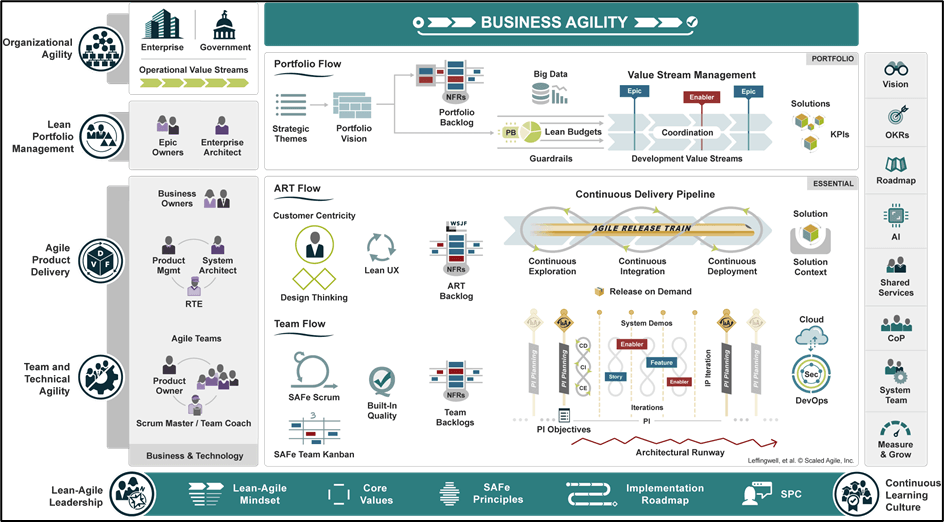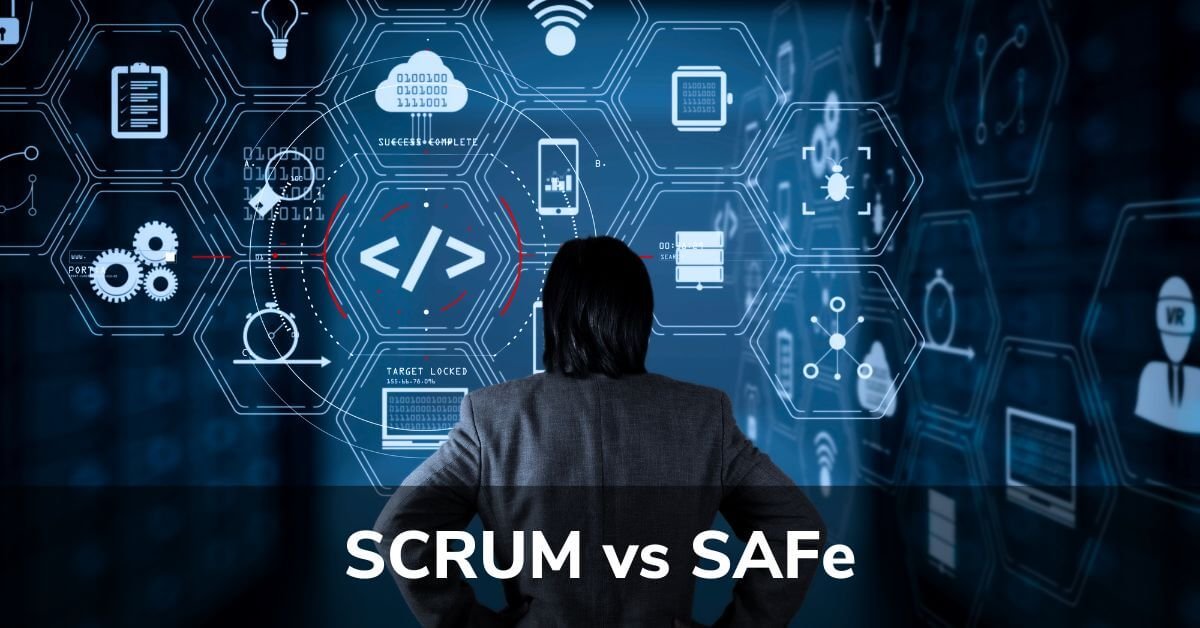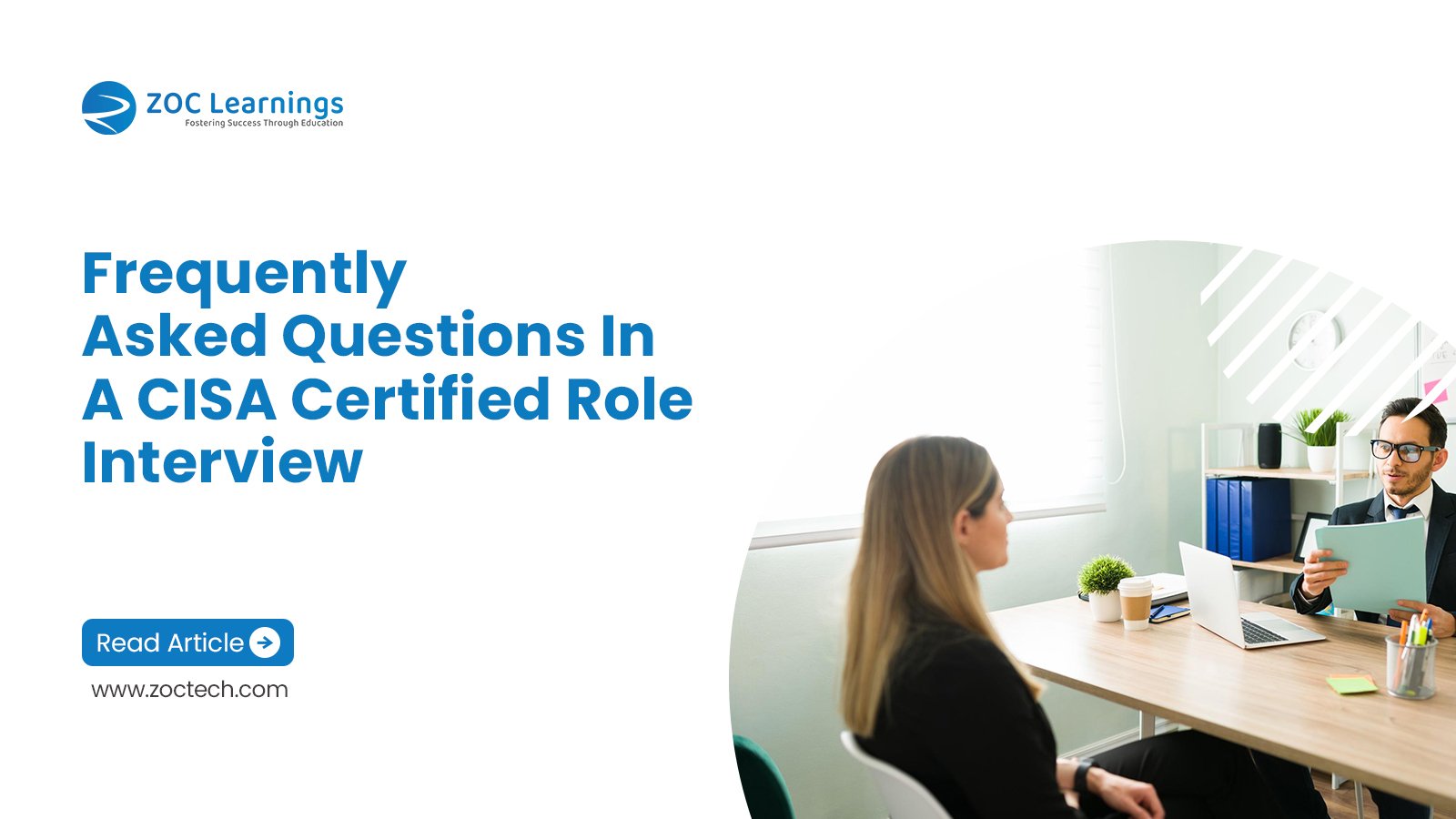Introduction
This is a very interesting topic where both – Scrum & SAFe (Scaled Agile Framework (SAFe®)) – are the methods of execution –– varying in terms of the scale of operations – meaning Scrum is implemented with a small team size while SAFe is implemented at the Enterprise level and with larger teams size which requires a more structured framework for managing large, complex projects that require coordination and alignment across multiple teams at organizational levels. SAFe incorporates Scrum at the enterprise level. Scrum framework is based on agile framework ideas and principles, while SAFe® is an enterprise-level implementation of the Scrum Framework.
Reference URL – https://zoctech.com/difference-between-pmlc-and-sdlc/
Difference between Scrum & SAFe
| # | Scrum | SAFe |
| 1 | Deals with smaller team and at local project level Scrum is an Agile methodology used in facilitating a project | Deals with larger teams spread across geographies/continents – it is a variant of Distributed Agile-Scrum SAFe is essentially an enterprise-scale implementation strategy |
| 2 | Team adopts best practices of Scrum | Adopted at Enterprise level – across multiple projects or teams |
| 3 | The most distinguishing aspect of scrum is that, the middle management plays no role | Program and Portfolio Management plays pivotal role in SAFe – They are decision points/check-points in reviewing strategy and investment funding, Agile portfolio operations, and Lean governance for one or more value streams [ITIL4] |
| 4 | Scrum formation is the basic objective | Building ART-Agile Release Train is the main construct |
| 5 | Typical roles in Scrum are – Scrum Master , Scrum Team & Product Owner | Being larger in scale of operations and as stated above of Program and Portfolio Management, various additional roles gets added – Product Manager, Business owner (key stakeholders who are ultimately responsible for the business outcome), Customer (consumes the output from the agile release train & the final view on whether the output was valuable), System Architect/Engineer, Solution Manager, Epic Owners, Enterprise Architect The roles are classified at – Team Level, Programme Level, Solution Level, Portfolio Level Ref. URL https://zoctech.com/product-owner-role-in-safe/ |

Different Scrum & SAFe Metrics
Other Execution Methodology
Summary
The main difference between the two is the HOW they are implemented in terms of Scale of implementation. Both the methods of execution use principles of Agile and Lean, their scale and level of implementation makes the difference in term of involvement of people, coverage & core focus like Release Planning or ART. SAFe® emphasizes release planning and hindsight for improvement.
Agile development for a small or medium-sized business, which started around two decades ago, is a solid way to improve software delivery time compared to Waterfall SDLC. It has also enhanced the overall quality of the development process while allowing for user participation. It has developed itself as a dependable execution model covering tiny to huge-sized enterprises. The agile framework development technique differs from the long-established software management method known as Waterfall.
While Scrum is often used to organize small teams, SAFe® is typically used to collect a whole enterprise. SAFe®, on the other hand, manages to include several crucial things that Scrum does not. SAFe® is an enterprise-level setup approach, whereas Scrum is an Agile methodology to manage software development.
FAQs
Q1: What is the primary difference between Scrum and SAFe?
A1: Scrum is a framework designed for small, cross-functional teams to manage and deliver work in short iterations, whereas SAFe (Scaled Agile Framework) is a framework for scaling Agile practices to large organizations, enabling multiple teams to work together efficiently.
Q2: How does Scrum handle team roles compared to SAFe?
A2: In Scrum, there are three primary roles: Scrum Master, Product Owner, and Development Team. SAFe, on the other hand, introduces additional roles such as Release Train Engineer (RTE), Product Owner, and System Architect to facilitate coordination at a larger scale.
Q3: Can you explain the approach to planning in Scrum and SAFe?
A3: Scrum uses Sprint Planning, where teams plan work for a fixed time period (Sprint) and adjust as needed during the Sprint. SAFe employs Program Increment (PI) Planning, a more extensive event where teams plan work for a fixed time frame (PI) to ensure alignment across multiple teams.
Q4: What are the key ceremonies or events in Scrum and SAFe?
A4: Scrum ceremonies include Sprint Planning, Daily Standup, Sprint Review, and Sprint Retrospective. SAFe has ceremonies like PI Planning, Scrum-of-Scrums, Inspect and Adapt, and System Demo, designed to synchronize work across teams in large-scale development.
Q5: How do Scrum and SAFe handle changes and adaptability differently?
A5: Scrum promotes adaptability through its iterative nature, allowing changes at the end of each Sprint. SAFe, while still agile, has more structured change control through its Program Backlog and PI planning, ensuring alignment and minimizing disruptions in large organizations.











